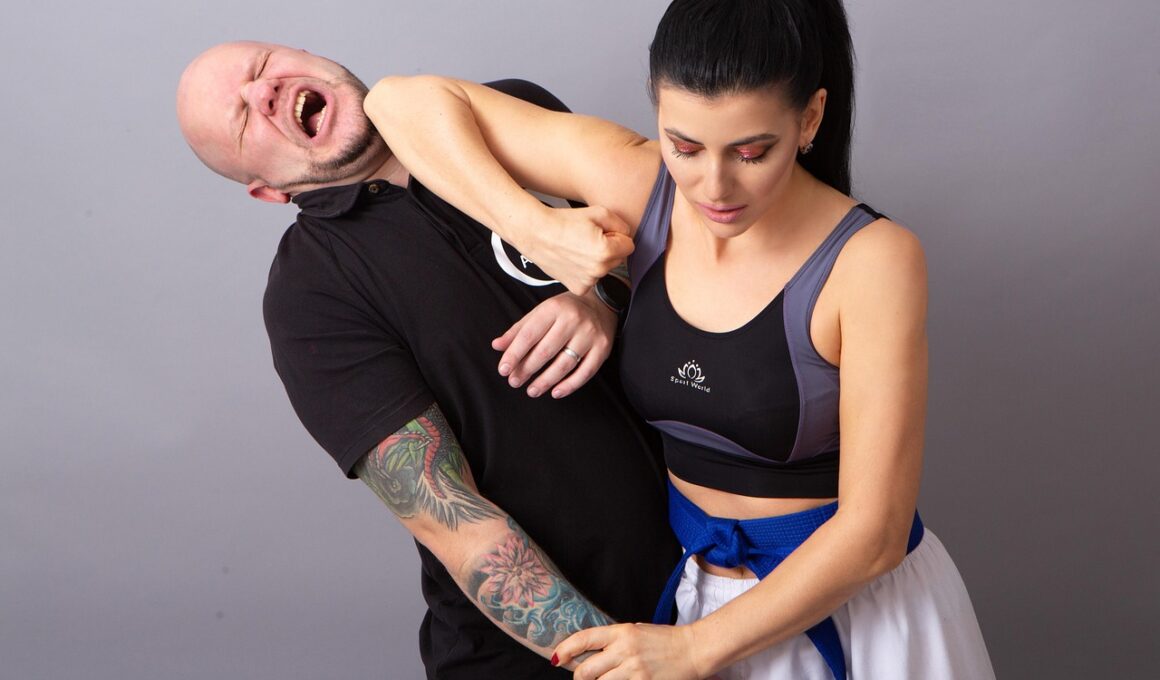Avoiding Common Mistakes When Purchasing Training Equipment for Self-Defense
Purchasing training equipment for self-defense can be a daunting task, especially for beginners. It is crucial to understand the purpose of each item to ensure that you select what is best suited for your needs. Always research different types of gear, including punching bags, self-defense sticks, and protective gear. Know what each serves, as investing in the right equipment enhances your training experience and effectiveness. Before making a purchase, assess your skill level and objectives. Some equipment is designed for advanced practitioners and may not be ideal for beginners. Read product reviews and testimonials to gain insight into the experiences of others who have purchased similar items. Utilize online platforms, social media, and forums dedicated to self-defense interests. Look for gear that is durable and constructed of high-quality materials. Additionally, consider your budget, balancing quality and price. At times, it may be worth investing a little more for high-quality equipment. Do not underestimate the importance of proper fit and comfort, particularly for protective gear. Lastly, always consult with instructors or experienced practitioners before finalizing your equipment choice.
Prioritizing Quality Over Price
When purchasing training equipment for self-defense, prioritizing quality over price is fundamental to making a wise investment. While it may be tempting to opt for cheaper options, doing so can lead to dissatisfaction and even safety hazards during training. Quality equipment is designed with safety, durability, and functionality in mind, making it effective and reliable during practice sessions. Assess the brand reputation and seek recommendations from your instructors or fellow practitioners. Look for equipment made from high-grade materials, as they offer better performance and longevity compared to low-cost alternatives. Do not hesitate to spend a little extra if it means acquiring gear that performs well under pressure. Safety should always be a top priority, particularly when practicing self-defense techniques. Purchase items that have passed safety standards and reviews to ensure protection during training. Many manufacturers now offer warranties and guarantees, which can be indicative of the quality investment you make. Before making a selection, take the time to compare various products to find the best fit for your needs and training effectiveness. Remember, a few extra dollars can prevent potential injuries and improve your overall training experience.
Selecting the right size and fit for your training equipment is essential to maximize effectiveness and safety. Whether it’s gloves, body armor, or training uniforms, the size must match your body measurements accurately to allow optimal mobility. Gear that is too tight can limit your movements, while overly loose gear can hinder performance and increase the injury risk during practice. Take the time to measure yourself or refer to sizing charts provided by the manufacturer. Do not overlook the possibility of trying on equipment, especially for protective gear. Many shops allow you to test the fit, which can lead to better purchasing decisions. Moreover, when considering gloves, choose styles that provide ample wrist support, as this is often key in preventing injuries. Pay attention to the material used, as some fabrics offer stretch and comfort while others may feel restrictive. Training shoes also require similar considerations; they should provide adequate support and grip for varied movements. Ultimately, ensure that your chosen self-defense gear fits snugly but comfortably, enabling you to focus fully on training without distractions from improper equipment.
Don’t forget the importance of functionality and versatility in the training equipment you choose. Items that serve multiple purposes can provide exceptional value and enhance your training sessions. For instance, a multi-functional punching bag can be adjusted to suit various exercises while teaching form and footwork simultaneously. Selecting such versatile items not only saves you money but also saves space if your training area is limited. Additionally, consider the ability to progress with your equipment as your skills advance. Some gear is scalable, meaning it can evolve alongside your increasing proficiency levels. When evaluating items, look for features such as adjustable weight limits and interchangeable components. These features make it easier to tailor your training effectively. Also, pay attention to how easy it is to set up and use the gear; you don’t want to face delays during practice sessions due to complicated assembly. Self-defense training should be about practicing techniques effectively, not about dealing with cumbersome equipment. Thus, aim to find gear that enables adaptability and supports a variety of training routines. In this way, your training remains engaging and productive.
In addition to functionality, it is vital to consider the brand’s reputation when purchasing self-defense training equipment. Trusted brands tend to produce gear that meets specific standards, emphasizing quality, safety, and durability. Research online reviews and customer feedback to understand better what others think about various brands. Look for third-party testing certifications that validate the claims made by manufacturers regarding the effectiveness and safety of their products. Engaging in a community of self-defense advocates can also provide insights into which brands are highly regarded. Many well-known brands offer warranties or performance guarantees, giving you added assurance with your purchase. When you invest in a reputable brand, you are more likely to receive excellent customer service. If you encounter issues, a reputable brand is more likely to assist with replacements or repairs efficiently. Keep in mind that while quality brands may come at a higher initial price, the long-term benefits may outweigh the costs, ultimately saving money on future replacements. Establish a list of reputable brands to narrow down your options while shopping. This step can simplify your process and increase the likelihood of finding suitable equipment.
While aesthetics can play a role in your choice of self-defense equipment, it should not be your primary focus. Equipment that looks good may attract the eye, but appearances can often be deceiving. Instead, prioritize attributes such as functionality, fit, and comfort before considering color or design. It is advisable to choose items that are practical and serve a distinct purpose, as these qualities are crucial for successful training. That said, opting for training equipment that reflects your style can enhance motivation. For many individuals, having gear that feels personalized can significantly influence their enthusiasm and commitment to training. Select colors and designs that resonate with you but ensure that functionality does not take a backseat. Training equipment should instill confidence when used; the right look can provide a mental boost. Still, maintain a good balance between style and usability. Factor in how the aesthetics of your gear can affect your perception of training. Always remember that self-defense training focuses on developing skills and abilities, and gear should serve as a supporting tool to help you achieve those goals.
Finally, consider the ongoing maintenance and care required for your self-defense training equipment. Sometimes, individuals neglect the need to maintain gear, leading to a decline in performance and safety. To maximize the lifespan of your purchases, establish a regular cleaning and inspection routine. Understand the maintenance guidelines for each piece of equipment before you buy. Some items may require specialized cleaning products or methods, while others might need minimal upkeep. Regular maintenance helps ensure your equipment remains in top condition while reducing the risk of injury during active use. Additionally, inspect your gear for signs of wear and tear periodically. Replace items that show significant damage, as they may no longer provide adequate protection or functionality. Keeping your training environment organized also contributes to better care of your equipment. Designate appropriate storage solutions to protect against moisture, dust, or accidental damage. Conclusively, a strong commitment to maintaining your training equipment enhances your overall self-defense training experience, ensuring you are not only prepared for challenges but also safe throughout your journey.


